I’ve added a payment feature called “Buy Me A Coffee” to the blog. If you want to support Birds Calgary, just go to the blog web site and click on the icon to make a secure payment. This is to help with the annual costs of web hosting and domain name renewals. If Birds Calgary has been useful to you, please consider supporting the blog! Thank You!! – Bob Lefebvre
Archives
Birds & Beers, November 23/23
Thursday November 23, 5-9 pm
Next Thursday we will meet at the usual place, the Legion at 9202 Horton Road SW in Calgary. Doors open at 5 pm. Once again we will meet in the big ballroom. At about 7 pm there will be a presentation by Roland Dechesne on The Impacts of Light Pollution on Birds.
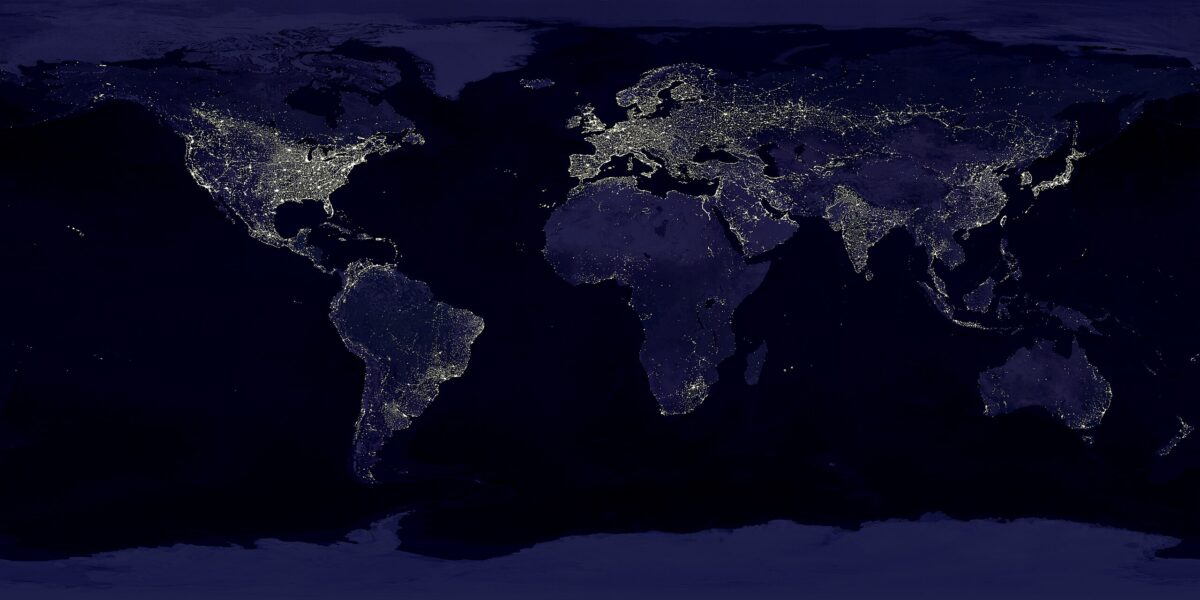
Light pollution has both hormonal and behavioral negative impacts on birds. Though pervasive in our modern world, outdoor artificial lighting is a pollutant that is relatively easy to control, if we can get past some of our irrational attachment to our beliefs that more light at night is better.
Roland Dechesne, Fellow of the Royal Astronomical Society of Canada (RASC), is a member of the RASC Light Pollution Abatement Committee (LPA Committee) as well as a Past President of the Calgary Centre of the RASC and an amateur astronomer with over 40 years’ experience. He has been a popularizer of astronomy to the public for much of that time. His interests are astrophotography, meteorites and light pollution abatement. He ‘moonlights’ as an oil and gas geologist during the day. He was recently honoured by having asteroid #10087 named for him. He runs the Society’s @RASC_LPA twitter account that focusses on light pollution and the health impacts of light at night on health and the natural world.
Everyone is welcome to attend Birds & Beers. See you there!
Game Birds Taking Refuge in Our City
By Cathy Warwick
Where is one place a bird bred for the sport of hunting can be and not get shot at? In the city of course! Yes there are lots of other dangers, namely cars, but there are less predators and less people in camouflage fatigues lurking behind trees ready to shoot. It’s positively a paradise for game birds! In Calgary there are a couple populations of game birds hiding out that you might be lucky enough to see. These are the Gray Partridge and the Ring-necked Pheasant. (Another local game bird, the Ruffed Grouse, is usually only found in small numbers in the conifer forests on the west edge of the city, and is pretty hard to find.)
While walking in our southwest neighbourhood I saw a small group of Gray Partridge for the very first time in my life. They were small plump chicken-like birds with a cinnamon patch on the face. These little round birds were running along the ground very fast, they were moving as a group with no apparent leader. They seemed to spook at the sight of us and hustled along a chain link fence. The problem was half were on the inside of the fence and half were on the outside. They ran most of the length of the fence before they noticed what had happened. The whole group then stopped and cheeped for a while in confusion. I’m not sure they are the sharpest knives in the drawer but they sure are cute. In the half-light we saw some of them fly up over the fence, which seems to be a last resort for them.

The Gray Partridge was introduced to North America from Europe in the early 1900s. It is mostly found on farmland, especially in the Northern Prairies where it somehow survives the cold winter. The hens will lay a lot of eggs, more than most birds. Up to 22 in a clutch! These birds also have very short life spans, only averaging 1.8 years.
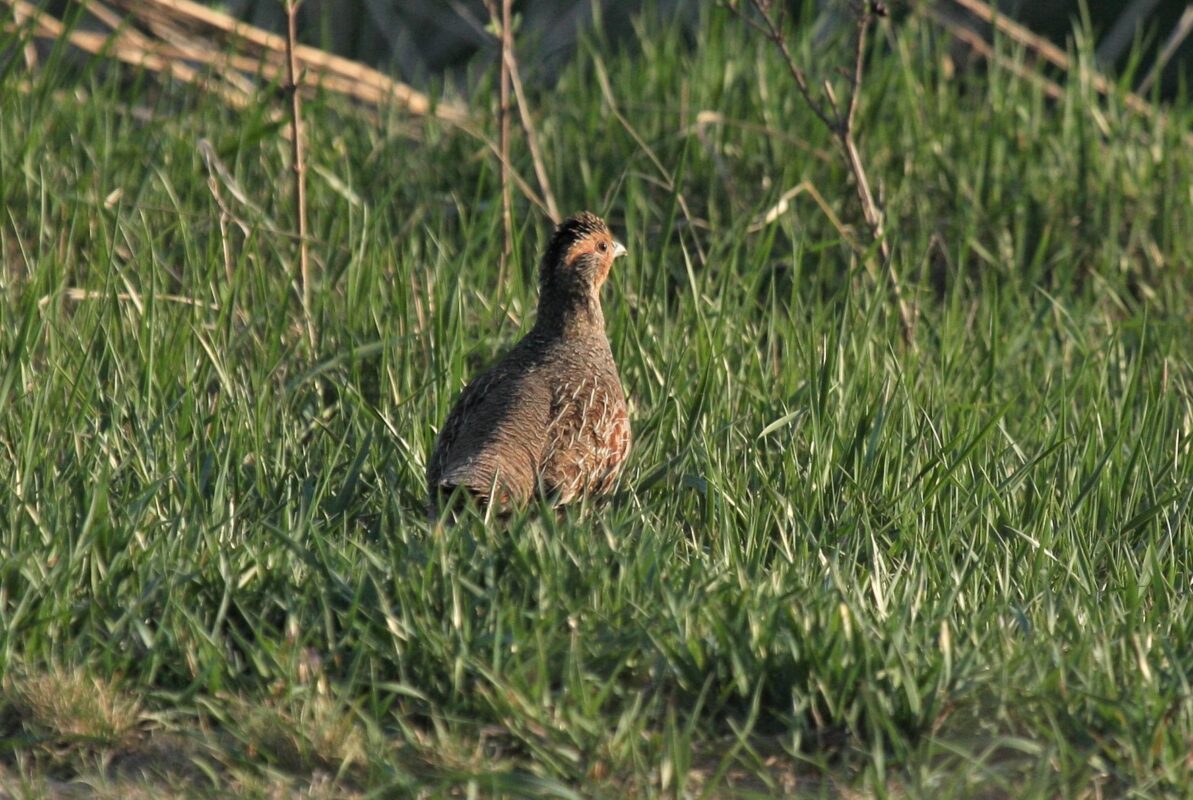
I was biking along the Bow River bike path to Fish Creek Park and saw a Ring-necked Pheasant wandering around the back yards bordering the path. What a show stopper that rooster is! I screeched to a halt and looked at its bright red face, beautiful iridescent blue head and very long tail. Also the white ring around its neck of course. The female (hen) is a more camouflage brown and is smaller than the rooster. The roosters are very striking and colourful, the allaboutbirds.org website even calls them ‘gaudy’. That may be a backhanded way of saying they don’t really belong in our landscape. You can get an inkling of that just by looking at them, North American species are usually a bit more subdued in colour. The Ring-necked sure aren’t camouflaged with that attire!
In fact their populations are supplemented heavily by the Alberta Conservation Association which runs a “Provincial Pheasant Release Program”. I hear they released melanistic Ring-necked pheasants this year, which have an all black body. Still not great for hiding from coyotes during the winter. It’s actually the hens that have a much harder time during the winter, they do all the work with the eggs and the chicks. Thus they spend a lot less time fattening up for winter. Lucky for them that hunters are encouraged to shoot the males.

Photo by Diane Stinson.
Keep your eyes out for these game birds sheltering in our city and when you see one take a moment to appreciate all that it has to survive – hunters, traffic and worst of all, winter.

Photo by Diane Stinson.
Learn more about Gray Partridge and Ring-necked Pheasants on eBird.
Global Big Day, Saturday October 14
Annual October Big Day by eBird
Posted by Bob Lefebvre
This Saturday, The Cornell Lab of Ornithology encourages people all over the world to go out and do some birding, and record their sightings on the eBird app. Like the Global Big Day each spring, this provides a one-day snapshot of world birding.
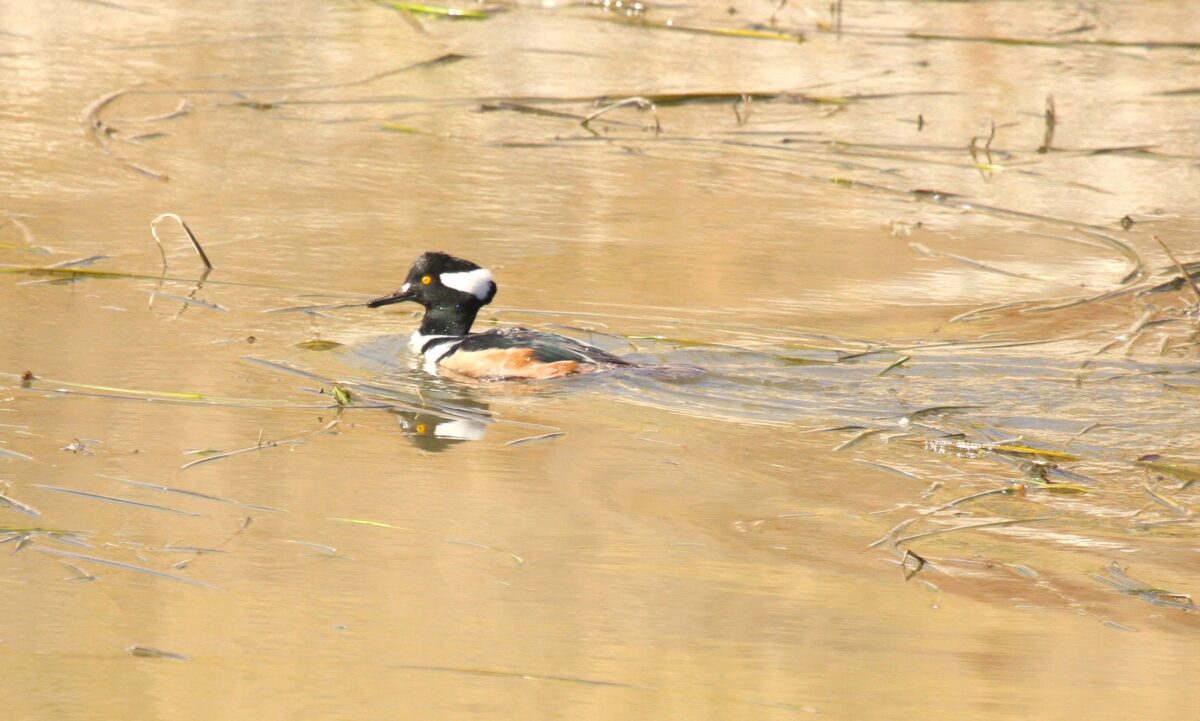
You can go birding anywhere, and enter as many eBird lists as you like. Here is a link to more information onthe eBird site.
Every month, eBird has a new challenge to select an eBirder of the month. The winner gets a new Zeiss product (usually top-end binoculars). This month the challenge is not month-long, but just about the Big Day. Just submit five complete eBird checklists that day, and you will be entered to win a Zeiss Thermal Imaging camera. Here are the contest rules and other information.
Remember to check the eBird site near the beginning of each month to see what you have to do to enter the contest that month.
I hope you can get out on Saturday and submit some lists!
Champions Monument Unveiled in Fish Creek Park
Gus Yaki among seven honoured as Alberta Champions.
Posted by Bob Lefebvre
The Alberta Champions Society unveiled their seventh Field Of Fame on September 28. The monument honours seven prominent Calgarians for their contributions to the province. The monument stands next to the Friends of Fish Creek office at Bow Valley Ranch at the east end of Fish Creek Park.
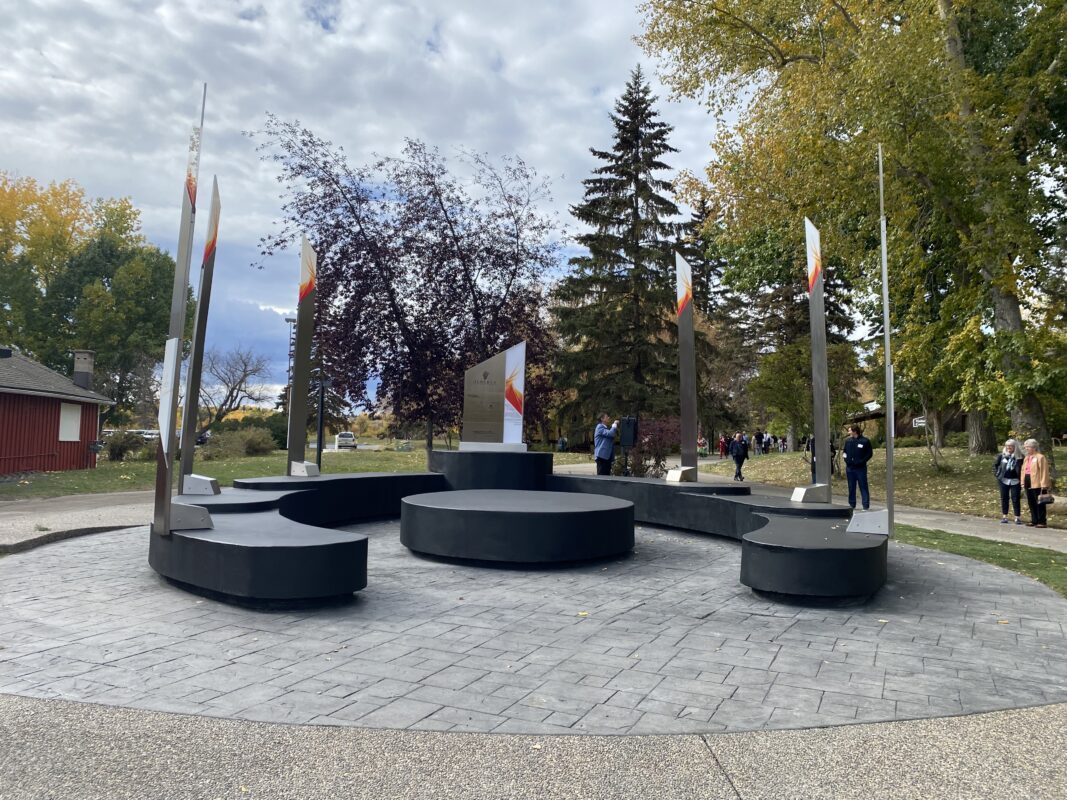
The monument honours Virnetta Anderson, Narcisse Blood, Michael Green, Roderick Mah, Chuck Mawer, Peter Prince and Gus Yaki. Yaki was a prominent naturalist and birder who passed away in 2020.
The monuments were unveiled after a nice ceremony on September 28. You can watch videos of the unveiling here. (In the long video, the unveiling of Gus’s monument starts at 119:30.)
Here is a link to an article about the event in the Calgary Herald.
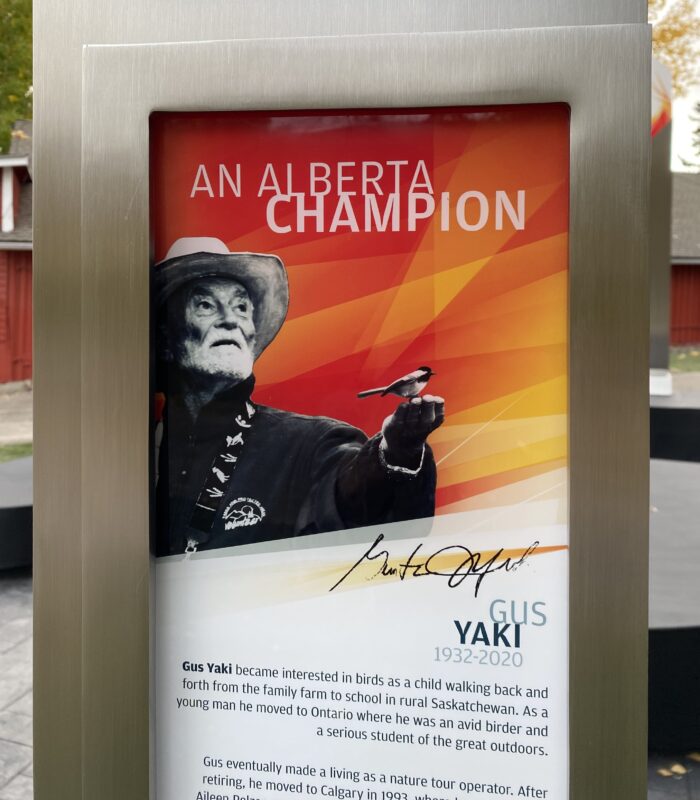
The next time you are at Bow Valley Ranch, have a look at the Field of Fame.
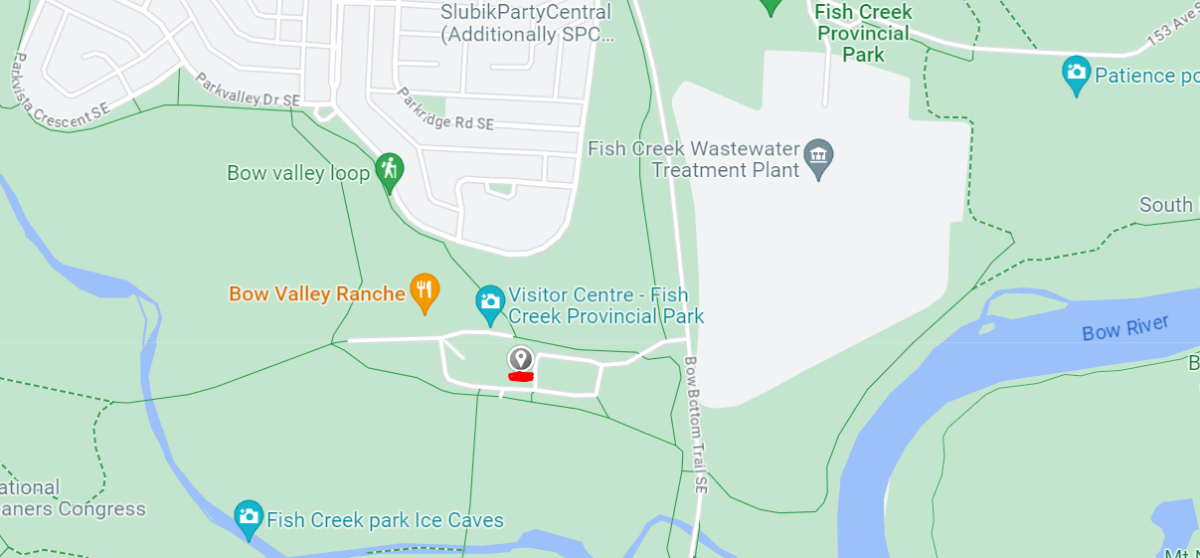
Birds & Beers, September 28/23
Thursday September 28 from 5-9 pm
The new season of Birds & Beers will begin with a presentation by Gordon Sick about his trip to Newfoundland.
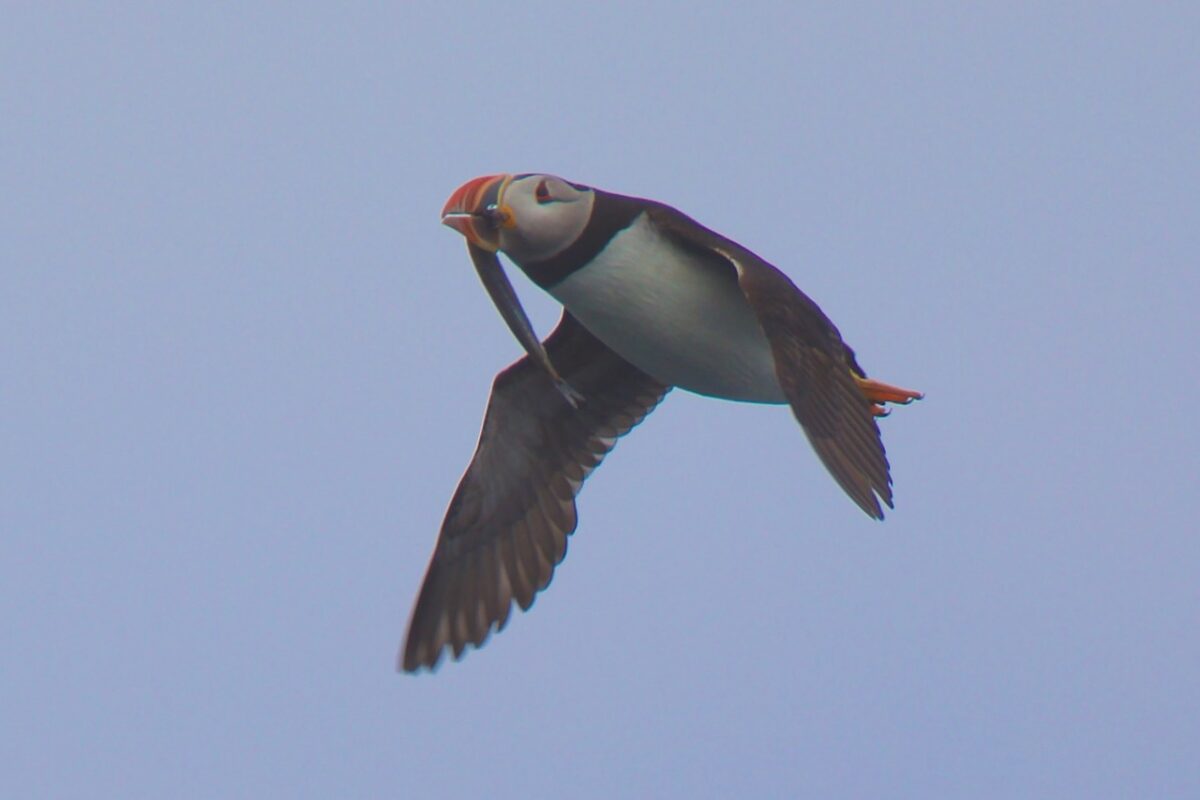
Newfoundland is for the Birds: It’s an Aukward Province
We spent 3 weeks of the summer on the Newfoundland coasts and viewed a variety of nestlings, fledglings and adults of species including Puffins, Murres, Razorbills, Guillemots, Gannets, Shearwaters, Kittiwakes, Black-backed Gulls, Terns, Sandpipers and Plovers. We searched New Brunswick, PEI and Newfoundland for a Piping Plover, which was an interesting exercise, with results to be disclosed at the presentation. We’ll also show an iceberg and a whale breaching to prove that we were in Newfoundland.
Birds & Beers meetings are held at the Royal Canadian Legion, 9202 Horton Road SW. This year we have the big ballroom, which is a very large space with excellent sightlines for presentations. We have the room starting at 5 pm, which should give many attendees more time to have a meal and socialize. You can arrive later if needed, and the presentation will begin at about 7 pm.
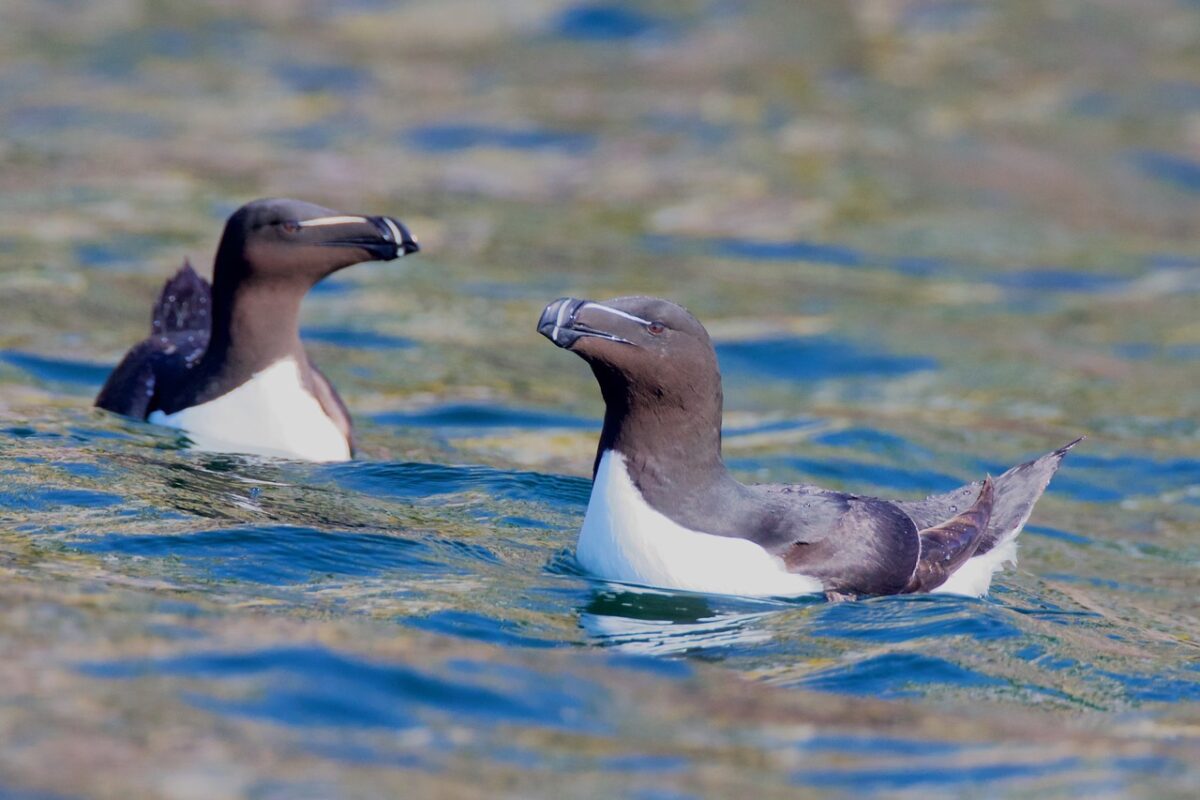
Everyone is welcome to attend, including children if accompanied by an adult. See you there!
The October Birds & Beers will be on Thursday October 12, again from 5-9 at the Horton Road Legion. Dianne and Bob Leonhardt will do a presentation on their recent trip to Mexico.
Birds & Beers is Back!
The fall season begins on Thursday September 28.
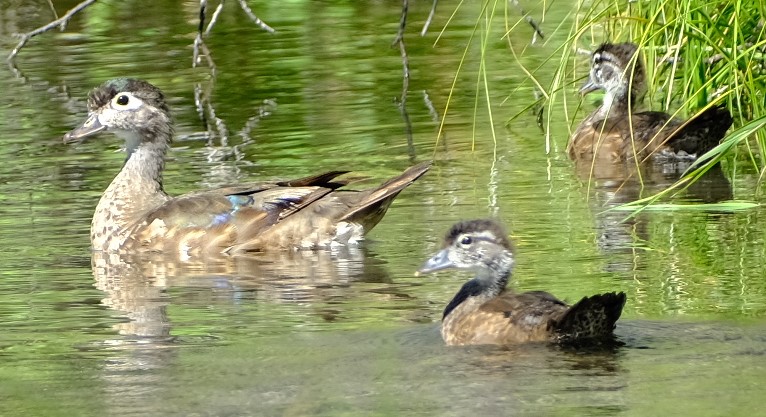
Joan Walker has booked the new season of Birds & Beers and we will begin on Thursday September 28. As usual, all Birds & Beers events will be held at the Royal Canadian Legion at 9202 Horton SW in Calgary. Previously we were meeting on Fridays, but the reason for switching to Thursday is that we will now be able to use the large ballroom! The ballroom is a much larger space than the one we had the last couple of years, and it has comfortable seating and a large drop-down screen for presentations. A short-order menu will be available for food and drinks, and there are some new menu items.
Meetings will now begin at 5 pm, which will give more time for eating, drinking, and socailizing before the presentations, which will still begin at about 7 pm. People are welcome to arrive at any time between 5 and 7.
The first couple of presentations have been arranged (more details on them in upcoming posts) but we are always looking for more. If you have a presentation about a trip you took or anything about birds locally or in general, please contact us. You can email me at birdscalgary@gmail.com and I will put you in touch with Joan.
Save these dates in your calendar:
- Thursday September 28 – Gordon Sick sharing his Newfoundland experience.
- Thursday October 12 – Bob and Dianne Leonhardt sharing Mexico.
- Thursday November 23 – TBA
We do not meet in December but will announce the dates for January-June as soon as they are booked.
Everyone is welcome to Birds & Beers!
Birds & Beers, Friday June 9
This Friday will be the last Birds & Birds before the summer break. We meet, as usual, at 6 pm at the Horton Road Legion, 9202 Horton Road SW.
There will be a presentation after 7 pm by Liz Goldie, about our native bees.
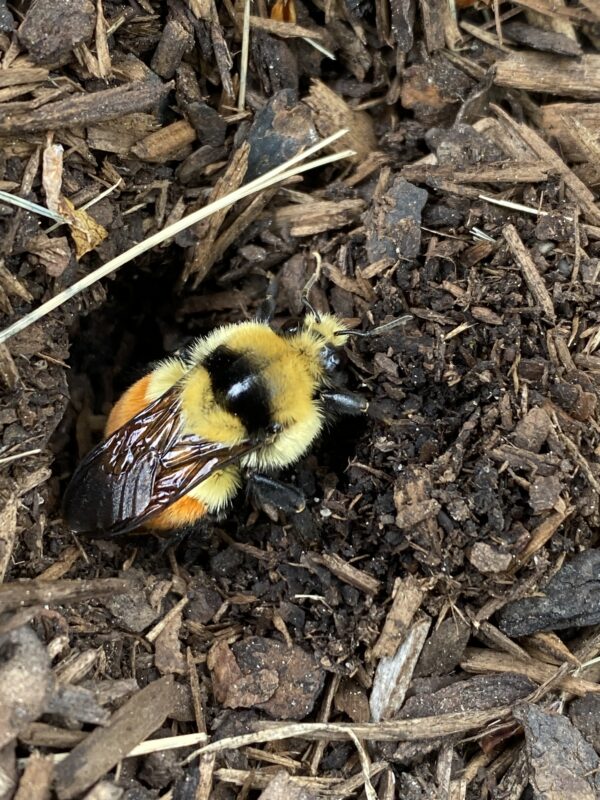
Come and join us as we get the “Buzz” on our native bees. Our guest speaker, Liz Goldie from the Calgary and District Beekeepers Association, will take us on a closer look at these industrious and necessary critters. Most of us are aware that bees support the growth of trees, flowers, and plants, provide food and contribute to complex ecosystems. But did you know that at least 24 species of bird, including Blackbirds, Ruby-throated Hummingbird, and European Starling, prey on bees? Come and learn about these fascinating creatures!
To help Liz with travel expenses, a small contribution would be appreciated.
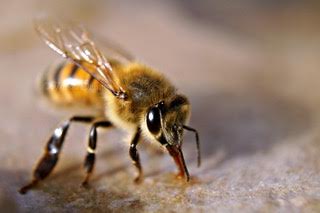
Everyone is welcome!
Save Ricardo Ranch!!
On Tuesday May 16 Calgary City Council will hear submissions on a development in the area formerly known as Ricardo Ranch.
Ricardo Ranch, in the far south of Calgary, is the last undeveloped, intact wetland along the Bow River in Calgary. This unique ecosystem contains wetlands, native grasslands, and old growth riparian forest. There are proposals before City Council to develop the area and have up to 20,000 people living on the floodplain there. Within the proposed development radius is the only Great Blue Heron rookery left in the city, as well as endangered Bank Swallow nesting sites, and many other sensitive species.
A number of nature and conservation organizations have come together to express their concerns about this project, as they believe it goes against Calgary’s Climate Strategy and its goals as a Bird-Friendly city. As proposed, the development would eliminate a huge ecologically-sensitive area within our city, and one of the last such areas that we have.
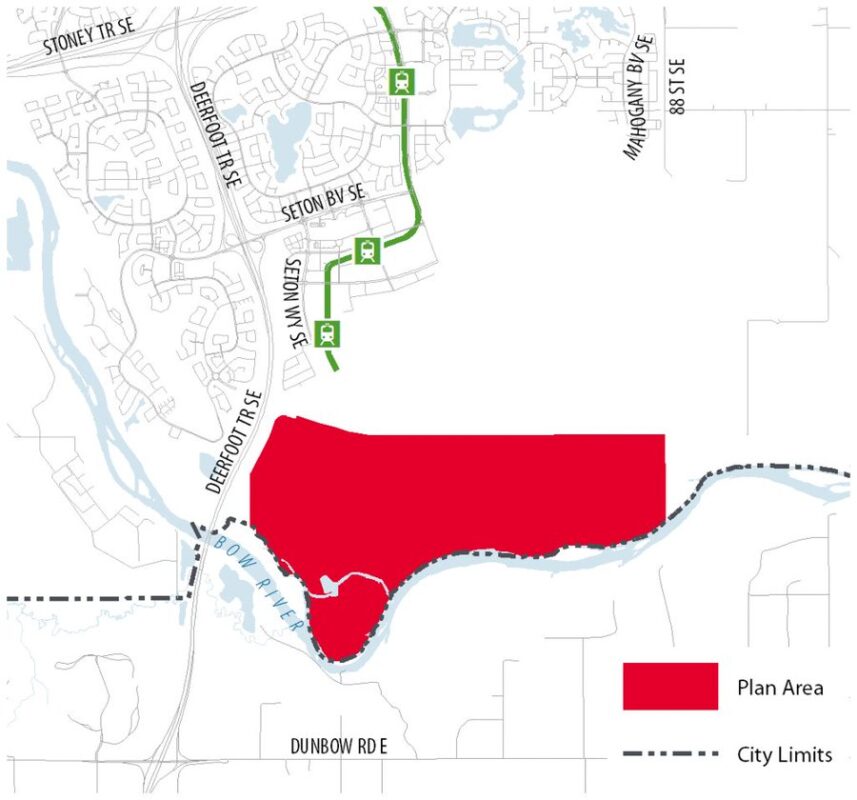
Here is an open letter that was sent to City Council and signed by many organizations:
Overview
On May 16 2023, Calgary City Council will decide whether to approve as proposed, or request modifications to the Logan Landing neighbourhood development adjacent to the Bow River. This development is partly within the river valley, at the southern edge of Calgary, as part of the Ricardo Ranch Area Structure Plan (RRASP). The RRASP was approved for development in 2016, and the Logan Landing neighbourhood by Genesis Land Development is the first of three proposed neighbourhoods in that area to come before Council.
The groups who have signed this letter all work to protect and conserve important habitats throughout Alberta. We collectively oppose the development, as proposed in the application, because it would significantly impact the Bow River’s floodplain, the adjacent wildlife corridor, and sensitive habitat contained within the area below the upper plateau.
We believe there is a win-win solution that will allow the Logan Landing neighbourhood to be built with modifications, while better protecting the wildlife habitat and floodplain.
Environmentally Significant Area
The Ricardo Ranch area, containing Logan Landing, is unique because of the convergence of ecosystems in one place and the varied plant and animal species that rely on this ecosystem to survive. Close to the river you will find riparian forest in the transition zone between the river and the upland area, bordered by some of the last natural wetlands in Calgary fed from channels off the Bow River and naturally occurring springs flowing down from the escarpment above. These springs are themselves surrounded by pasture land that contains remnants of what is now rare native prairie grassland.
Unfortunately, 46% of the City-identified Environmentally Significant Areas in the Logan Landing development are proposed to be permanently destroyed. This includes wetlands, of which Calgary has already lost 90%. Natural wetlands are a hugely important ecological asset that help mitigate against the increasingly severe effects of climate change and provide crucial habitat for migratory birds, bats, and amphibians. The Ricardo Ranch area is one of the last places within Calgary where natural wetlands are intact and healthy and we believe Council has an opportunity to ensure many of them remain this way. We recognize that the wetlands on the upper plateau will be removed or compromised to accommodate this development, but the natural wetlands below the upper plateau can be preserved.
Habitat for At-Risk Species
The Ricardo Ranch area provides habitat for Species At Risk. For example, the southernmost point of land in the RRASP, straddling Logan Landing and the adjacent parcel, is home to the last remaining great blue heron rookery (nesting site) in Calgary. Some Calgarians may remember the former rookeries in other parts of Calgary, including in Fish Creek Provincial Park that was abandoned by the herons following development in the surrounding area and significant recreational use of the park. We are concerned that the standards recommended by the federal Committee on the Status of Endangered Wildlife in Canada (COSEWIC) and Alberta Fish and Wildlife for the disturbance radius surrounding heron nesting sites of 1000m was relaxed to 750m to allow this development to proceed as proposed. The build-out of this neighbourhood will occur over multiple years, with loud and large machinery such as excavators, graders, and pile drivers operating within the recommended setback. If this land use proposal is approved without modifications, it is almost certain that this last heron rookery in Calgary will also be abandoned by this threatened species.
In addition to the threatened Great Blue Heron nesting site, the ecological inventory document for the RRASP found that the grasslands and wetlands within the area support the following, all indicating a healthy ecosystem:
- Colonies of bank swallows which are a threatened species that has lost over 98% of its population in Canada and which nest in the slope below the upper plateau;
- Songbirds such as Baird’s sparrow, a species of Special Concern under the Federal Species At Risk Act (SARA) and listed as Sensitive under the provincial Wildlife Act, which nest in grasslands;
- Seven species of bats, including the Federally and Provincially endangered Little Brown Myotis as well as several other species considered at-risk in Alberta that are sensitive to habitat loss and use riparian habitat for both foraging and roosting.
Important habitat for all these species will be lost if the development proceeds without modifications to better protect the river valley, the escarpment, and the wildlife corridor.
Native prairie grasslands are the most endangered ecosystem in Alberta. While the grasslands in the RRASP have been disturbed by historical grazing activities, they are still productive and are supported by the naturally occurring springs located along the escarpment. Preserving more of this ecosystem throughout the RRASP supports larger and more diverse animal populations, increasing its value and resilience.
Smarter Development Required
We know that growth is necessary to provide homes for the ever-increasing population of our city–this is why we do not oppose the development in its entirety. We believe this can be done more efficiently and not at the cost of disturbing and potentially destroying the few healthy, native ecosystems we have left within city limits. Instead, we must be creative and implement best management practices, in order to find ways to build in the areas we already call home, while protecting the areas our native wildlife also call home.
We believe developing the parcels within the Ricardo Ranch Area Structure Plan, as has been proposed, is contrary to statutory documents like the Municipal Development Plan (MDP) 2.3.4 Parks, Open Spaces and Outdoor Recreation, and 2.3.5 Municipal, School, Environmental, and Conservation Reserves, which outlines that the City will “protect, conserve, and restore” environmentally significant areas. This plan also appears to contradict the Climate Strategy and Council’s Strategic Plan for 2023-2026 which focuses on resilience. Climate resilience is a key pillar in this plan as we aim to build a city that recognizes the climate emergency and does its part to limit global warming to 1.5 degrees Celsius. However, we are aware this developer has proposed to install solar panels on every home in the development, and install electric vehicle charging infrastructure, which we applaud.
Win-Win-Win Proposal
There are options to modify the neighbourhood proposals within the RRASP, including Logan Landing:
1) Identified Environmentally Significant Area lands that are not otherwise dedicated as Environmental or Municipal Reserve can be dedicated as Conservation Reserve or
2) The developers could negotiate a land swap for part of the lands, donate part of the lands to the city or the province, or enter into a conservation easement agreement with a Land Trust non-governmental organization, with the appropriate benefit of tax credits.
Implementing these options would be a win-win-win scenario, with the sensitive habitat and species better protected, the river able to access its floodplain, and the developers will be able to build a still vibrant, complete community.
Conclusion
Calgary is a city that values its river valleys and wild spaces. We present this to the world as something that makes us unique and are rightly proud of what we have worked to conserve and protect. We have signed the International Durban Commitment for Biodiversity, which reads in part:
“This Commitment recognizes…that the value of biodiversity is multi-faceted – including ecological, economic, tourism, recreational, environmental, heritage, stewardship, spiritual, intrinsic, medicinal, nutritional, health, educational, scientific, cultural and social dimensions.”
By signing this Commitment, the City of Calgary acknowledges its own “accountability and responsibility for the health and well-being of our communities through protecting, sustainably utilising and managing biodiversity and recognizing its role as the foundation of our existence.”
This is exactly why we need to reconsider developing the valley lands within the Ricardo Ranch area as has been proposed, and all future developments in our river valleys. If we don’t do so now, we risk losing forever one of the things that helps us define ourselves as Calgarians. With what we know about catastrophic biodiversity loss and climate change, it’s time we take our prior commitments seriously and preserve the valuable ecosystems we have left. Let’s start with Ricardo Ranch.
Signed,
- Trout Unlimited Canada Bow River Chapter
- Nature Calgary
- Alberta Wilderness Society
- Canadian parks and Wilderness Society, Southern Alberta Chapter
- Calgary Climate Hub
- Calgary River Valleys
- Friends of Confederation Creek
Here is an op-ed presented by many concerened groups:
Council Must Start Walking the Talk on Climate Change and Biodiversity
This week Calgary City Council will decide whether to approve a new neighbourhood called Logan Landing at the southern edge of Calgary in an area known as Ricardo Ranch. The development is located in one of the last remaining intact wetlands along the Bow River in Calgary, crucial for supporting biodiversity and mitigating the effects of climate change. This important area must be protected from development.
Ricardo Ranch is unique because of the convergence of ecosystems in one place and the varied plant and animal species that rely on these ecosystems to survive. It includes river forests bordered by wetlands fed from the Bow River and natural springs from the slope above. The springs are surrounded by remnants of what is now endangered native prairie grassland.
An ecological study completed for Ricardo Ranch found the grasslands and wetlands within the area support multiple wildlife and plant species. Take a walk through this area on a beautiful spring day and you are likely to see activity around Calgary’s last nesting site for great blue herons, a diversity of songbirds that nest in the grasslands and riverbanks, and if you stick around into the evenings, a variety of bat and frog species. Many of the species you will find here are endangered or considered species at risk.
Grassland and wetland habitats can also play crucial roles in mitigating extreme weather events and the effects of climate change by absorbing excess water and releasing it during droughts. It does not make sense to develop this area in a city where we have declared a climate emergency and passed a Climate Strategy.
We appreciate the need for our city to continue growing, but it needs to be done in a sustainable way. There are options to modify the three neighbourhood proposals within the Ricardo Ranch area, including Logan Landing. These could include protecting environmentally significant areas within the steep slope and valley bottom. There may also be an opportunity for the developers to donate land for a tax credit, or exchange part of these lands with the city or the province for other developable lands.
These are win-win scenarios, protecting sensitive ecosystems while allowing developers to build a vibrant, complete community. Calgary is a city that values its river valleys and wild spaces The City has signed the International Durban Commitment for Biodiversity, and by doing so acknowledged the City’s “accountability and responsibility for the health and well-being of our communities through protecting, sustainably utilising and managing biodiversity and recognizing its role as the foundation of our existence.”
This is exactly why we need to reconsider developing the Bow River valley lands within the Ricardo Ranch area as has been proposed. If we don’t do so now, we risk losing forever one of the things that helps define us as Calgarians. With what we know about catastrophic biodiversity loss and climate change, it’s time we take our prior commitments seriously and preserve the valuable ecosystems we have left. Let’s start with Ricardo Ranch.
Signed,
Trout Unlimited Canada – Bow River Chapter
Nature Calgary
Alberta Wilderness Association
Canadian Parks and Wilderness Society – Southern Alberta Chapter
Calgary River Valleys
Calgary Climate Hub
Friends of Confederation Creek
Brian Keating
Calgary Urban Species Response Team
Miistakis Institute
Bird Friendly Calgary
Nature Alberta
Weaselhead/Glenmore Park Preservation Society
Finally, if you wish to express your opinion at the council meeting on Tuesday, there are instructions in this piece by Nate Schmidt:
There are three things you can do to help and you can choose to do as many or as few as your like:
- Email the mayor and city councillors – this development will affect places far outside of Ward 12 so the mayor and every councillor should hear what you think. The general contact form can be found here:
- Submit your comments on the project – comments received on or before May 9 will be part of the public record but don’t let that stop you from submitting whenever you’re able. The submission form can be found here.
- Sign up to speak – all Calgarians can speak for up to five minutes during public submissions. This can be done in person or over the phone here.
You will be able to sign up to speak and/or submit comments beginning now. The agenda will also become accessible one week before the meeting. When asked “What meeting do you wish to attend or submit to” select “Council.”
- For agenda item enter Logan Landing Development.
- You have the option to speak in person or on the phone.
- If you choose to speak on the phone you will receive an email with a phone number and dial-in code. Because of the large number of people who will likely submit, each speaker will be assigned a group number with five other speakers. Updates on which group is speaking are reflected through the live agenda which you can view as you are watching.
- If you choose to make written submissions you do not need to make any formal submissions on the public hearing date.
Once you are signed up, it’s as easy as submitting your written submissions via the web form or waiting your turn to speak on budget day.
Those choosing to speak in person must go to city hall and through security to council chambers. From there, you will be directed where to sit and when to speak.
You can co-present with others – this has an advantage if there are several people making identical points — Council will appreciate the efficiency and all copresenters can answer questions .
Advice for addressing council on the phone or in person:
- Register to speak in advance (via address above)
- When you phone in, make sure to mute your phone until your name is called
- When it is your time to speak and your name is called, unmute your phone to confirm you are present
- When you are called upon to speak, introduce yourself
- You’re limited to 5 minutes max to make your address. Write a draft of what you want to say and try it out loud a few times to see how long it takes
- Make your main points succinctly, and leave opportunities for followup questions from members of Council – you’ll then have an opportunity to expand upon key points without the time limit
- Speak slowly and clearly
- If you are calling in by telephone, stay on the line once you are finished (and mute yourself again) in case any councillors have follow-up questions
- Powerpoint presentations, or printed documents (shown via a document camera) can be part of your presentation (the A/V technician will assist with this), but it may take some time to set up. Doc. camera is much faster to use.
_______________________________________________________
Please read about this effort and speak up if you can!
Update on the City Nature Challenge
Help Calgary to reach its CNC goals this weekend!
Wanted: Plant, fungus, insect, and bacteria experts!
Posted by Bob Lefebvre
The 5th annual City Nature Challenge took place last week, from April 28 to May 1. The period for making observations has ended, but participants have until midnight on Sunday May 7 to upload their photos. Many of us are still working on that. In addition, all the observations need to be identified and have at least two people agree on the species to be considered Research Grade. You can help with this!
But first an update on where the challenge stands. Calgary is doing very well again, and has set new city records for the number of observations, species recorded, and participants. Matthew Wallace, the organizer of the Calgary CNC, had set a goal of 10,000 observations made in the Calgary area. Although we are not there yet, we are close.
Although the CNC is not really a competition between cities due to differences in climate, habitats, and human populations, nevertheless we should note that Calgary is among the Canadian leaders in total observations made, and may well finish with the most. On Monday evening Montreal was leading with 6,516 observation, with Victoria at 6,344 and Calgary in third place with 6,137. As of late Friday (May 5) Calgary has taken the lead among Canadian cities:
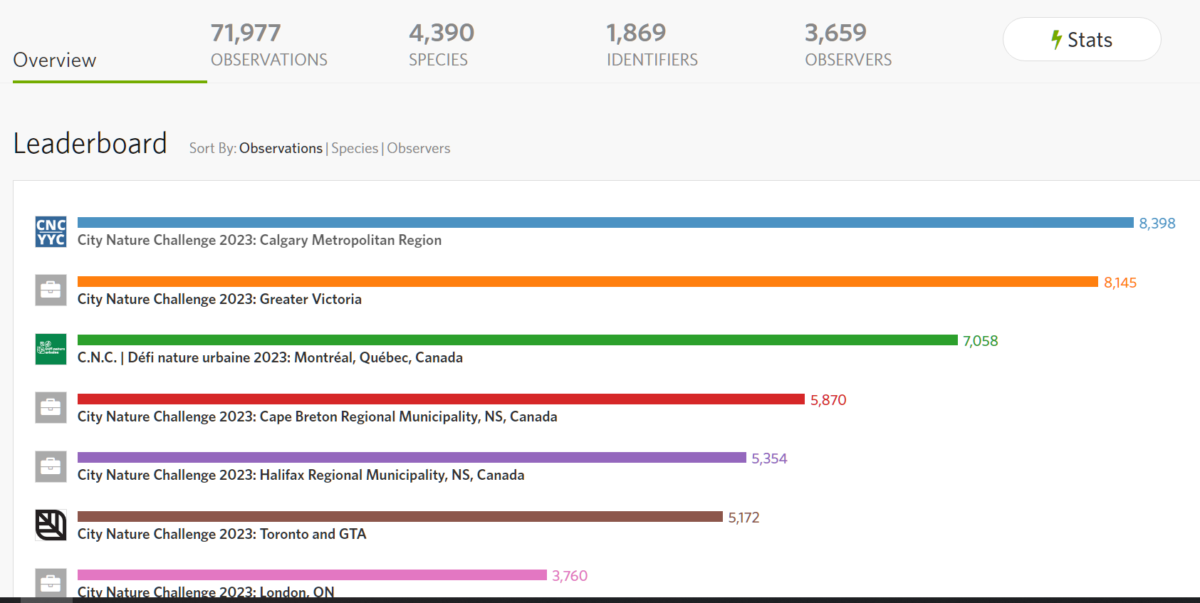
It’s interesting to look at the statistics for the Global CNC:
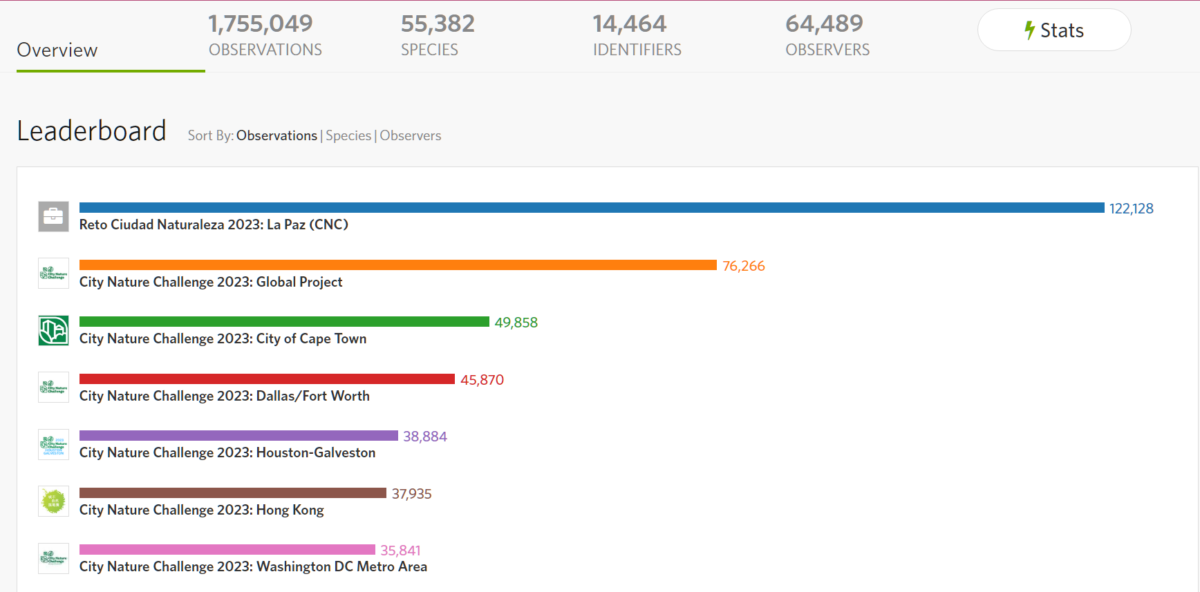
Over 64,000 observers made 1.75 million observations and identified over 55,000 species worldwide in the four days. The numbers from the leading city, La Paz in Bolivia, are staggering! Over 3,000 people made 122,000 observations and identified over 5,000 species! It shows the difference that climate and geography make, but it also shows what can be achieved with a year-round concerted effort to get people involved. La Paz has a metropolitan population of about 2 million, so it is comparable to Calgary.
Below are the statistics for Calgary as of late Friday. So far, 760 species have been reported by 336 observers. Identifications have been provided by 392 people.
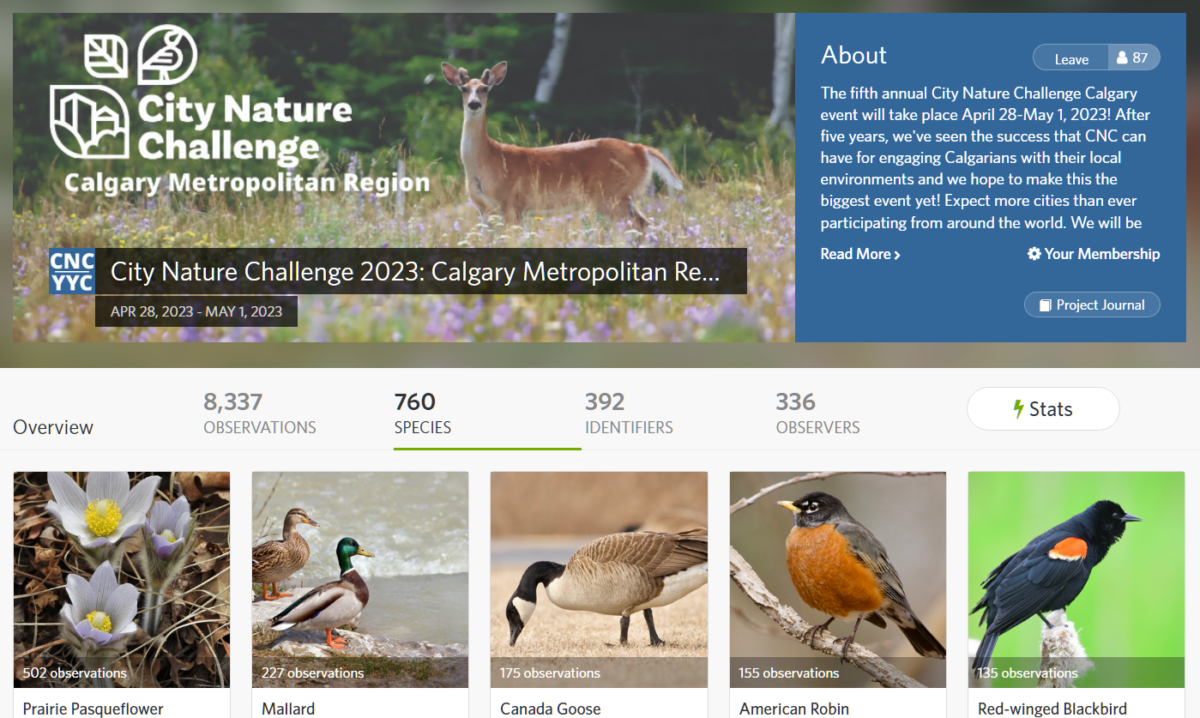
Once again Matthew Wallace was extremely busy on the weekend, making over 1,100 observations and recording 214 species (so far). But many others have also made hundreds of observations and recorded over 100 species each.
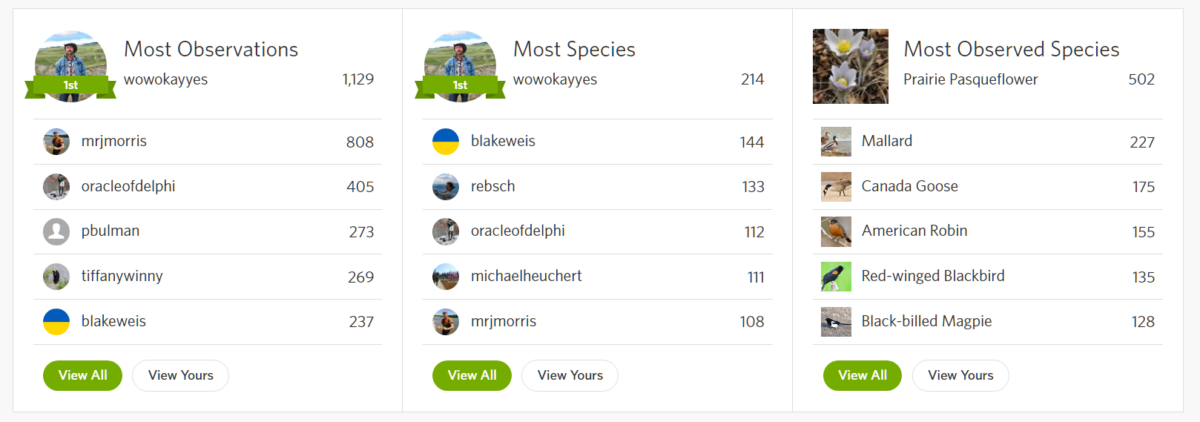
As you can see above, the Prairie Pasqueflower (the familiar spring crocus) is by far the most commonly reported species. Usually it is Mallard in first place, but the unusually hot and dry weather this year means that there were more early flowering plants reported, and more insects as well. This is where you come in.
When a photo is uploaded to iNaturalist, the artificial intelligence will try to identify it, and the observer can accept one of the suggestions or, if they know the species, can write it in or override a suggestion. Then all the other iNaturalist users in the world are able to view the observation, and agree with the identification or suggest an alternate one. Once an observation is uploaded with date, location, and a photo or sound file (and is wild or uncultivated), it is labelled “Needs ID.” Observations become “Research Grade” once 2/3 of identifiers agree on a species-level (or lower) ID. These are then eligible to be used in research projects.
There have been many observations submitted for the Calgary CNC that do not yet have a species-level ID, so are not Research Grade (this is normal; we want to get the photos of every species we can, whether we can confidently identify it or not. Identification comes later). All of the yellow ones below (about 3,000 observations) need additional identification. (Casual observations are not eligible for Research Grade. An example is a captive animal or cultivated plant.)
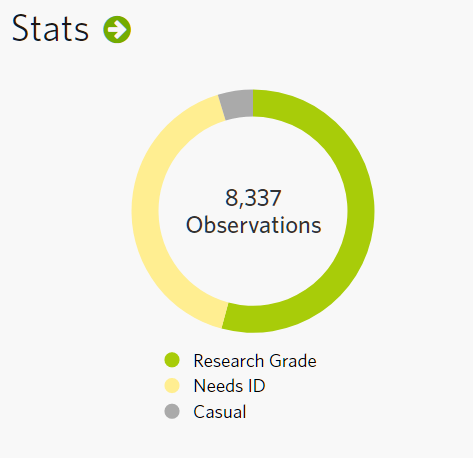
Any iNaturalist user can help to identify our observations from the CNC, or from anywhere in the world at any time. To see the Calgary observations, go to the Calgary Project Page. Click on the Observations tab, then “Identify.”
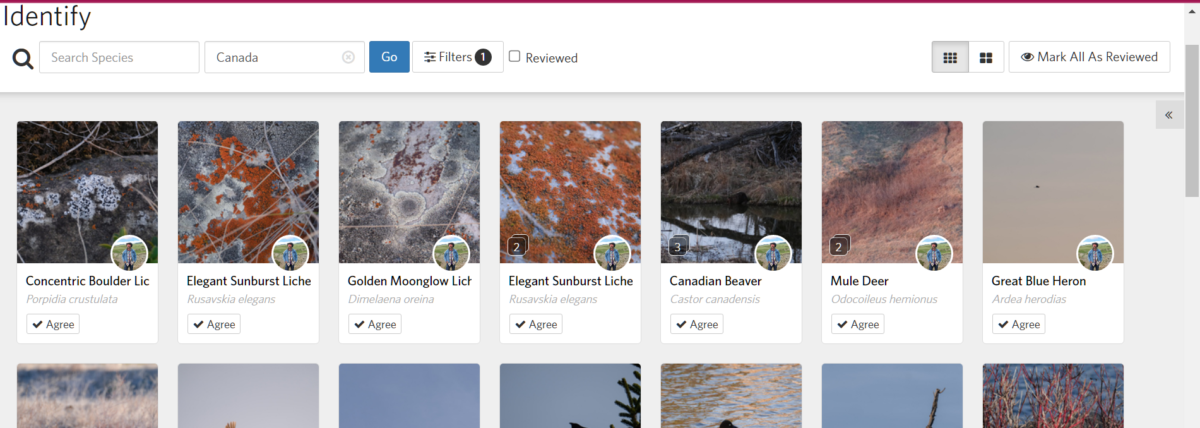
Here you can agree with the observer’s ID, or suggest another. See what the AI suggests. Where there are multiple photos of a species (like the Canadian Beaver, which has 3 photos) you can view them all. The filter set is the Calgary CNC region, but you can click that and set many more filters. For example, you might only be confident identifying birds, so you can set it to show only those. Birds are often quite easy to ID and there is a big birding community, so most of the bird observations quickly become Research Grade. But there are some unusual ones or less-than-perfect photos that still need ID for you keen birders. You can set a filter for “Needs ID” and only those will come up.
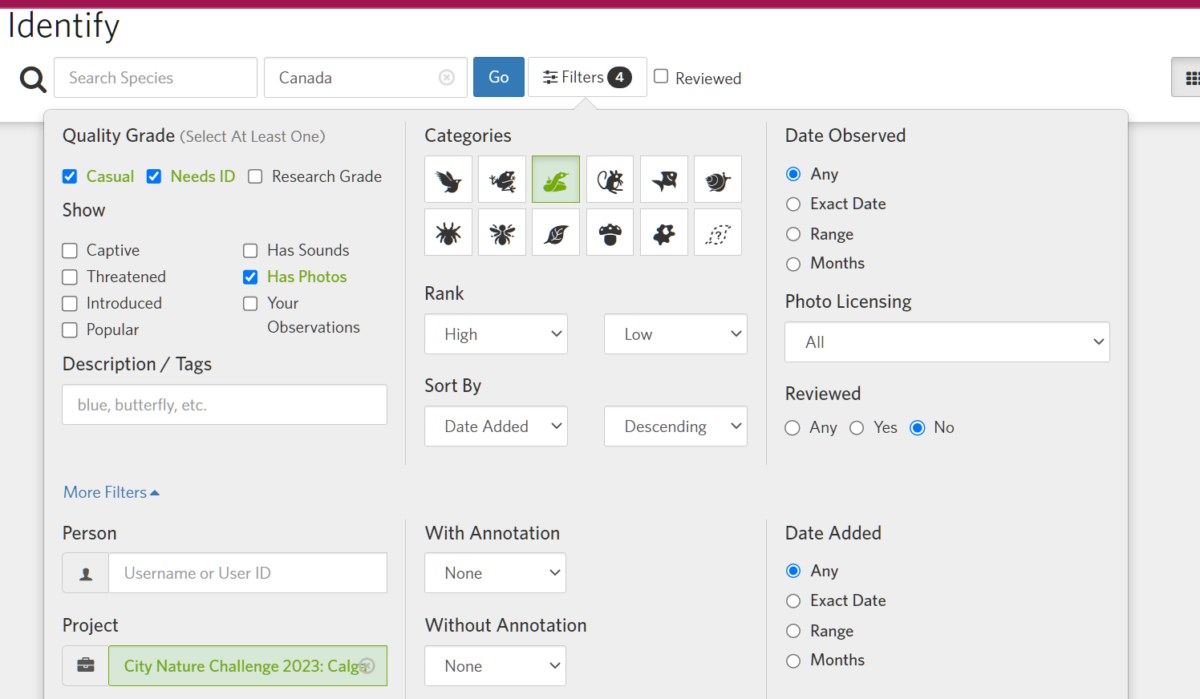
If you are a plant, fungus, insect, or bacteria expert, there are many more observations that need to be verified. So if you think you can help, please open an account on iNaturalist Canada and give it a try! As I said, the project is complete at midnight on Sunday, but you can continue to contribute identifications (and observations!) to iNaturalist year-round. I find it is a lot of fun and a great way to learn to identify more species of all kinds.
For those of you who are interested in taking part in bioblitzes like the City Nature Challenge, the next such local event on iNaturalist is the Metro Calgary Biodiversity Challenge from June 8-11. See the project page for more information.